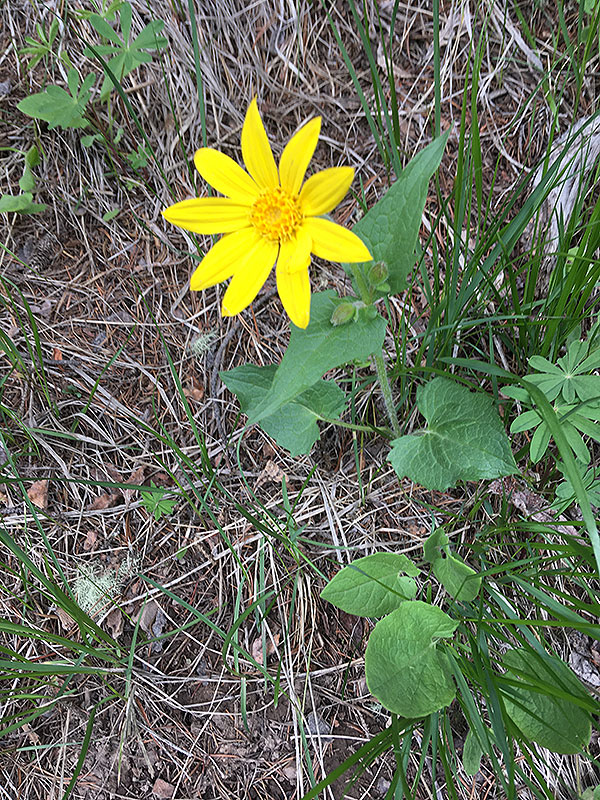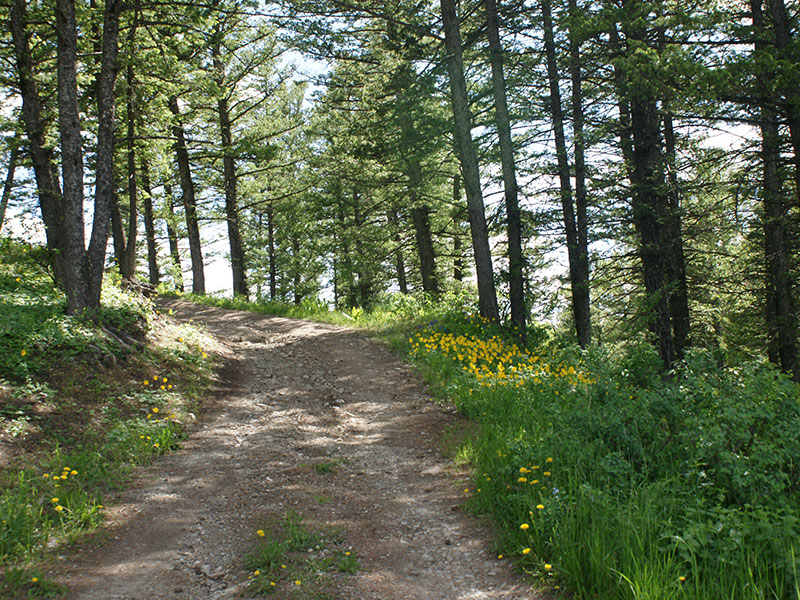Arnica cordifolia / heartleaf arnica
- yellow, daisy-like flowers; 1-2 per shoot
- opposite, heart shaped leaves; long petioles; 2-4 pair per stem
- large clonal colonies with many flowering and non-flowering shoots
- the dominant ground cover in moderate shade in many forests
Heartleaf arnica is a dominant ground cover in many forest communities in the Valley, and throughout the west. It is common to see dozens of flowering plants in a patch along with hundreds of leafy but flowerless individuals carpeting the ground around them. Although it is a plant of many habitats, it is often found in dappled shade.
Each heartleaf arnica flowering shoot bears one (occasionally two) daisy-like flower heads beginning in May. In the center of each head is a yellow disk of tubular flowers, with a fringe of bright yellow ray florets, each about an inch long. Underneath, there is an involucre of green, pointy bracts covered with white hairs, and sometimes with resin glands. In some populations, the ends of the ray petals have two small notches.
Also characteristic of the plant is the leaves. Each shoot has two to four pairs of leaves, each on a long petiole, at the base. The leaves are heart or arrowhead shaped, with fine tooth along the edges. Leaves on the stems tend to be clasping, i.e. apetiolate. At least most of the time… the leaf shapes are also reported to be highly variable. The stems themselves are hairy. Of all the composites, the arnicas are easy to identify to genus because the leaves are opposite and simple (not divided into leaflets), and the leaf shape of this species is “reliable”.
The fruit of heartleaf arnica is, like dandelion or prickly lettuce, an achene with a long, off-white pappus (hairy plume). As would be expected, the seeds are wind dispersed. Also like dandelion, the seeds are produced by apomixis rather than pollination, resulting in limited genetic mixing.
Unlike dandelions, however, arnicas are perennial; individual plants can live up to 12 years. They are also clonal; the main method of spreading is not seeds, but by long, slender, creeping rhizomes just slightly below the soil surface.
Walter Fertig wrote a nice piece about heartleaf arnica in a Plant-of-the-Week article for the USFS. It starts with something that rings true to many about the Asteraceae:
“Many plant-lovers get discouraged with identifying the myriad species of yellow-flowered composites… Telling genera and species apart among the “DYC”s (damn yellow composites) can require mastery of arcane botanical terminology and observation of minute floral and fruiting parts not always readily apparent to the naked eye.”
Fortunately, heartleaf arnica is one of the more easily identified exceptions.
| Color | |
|---|---|
| Family | |
| Blossom size | |
| Inflorescence size | |
| Inflorescence type | |
| When? | |
| Where? |



